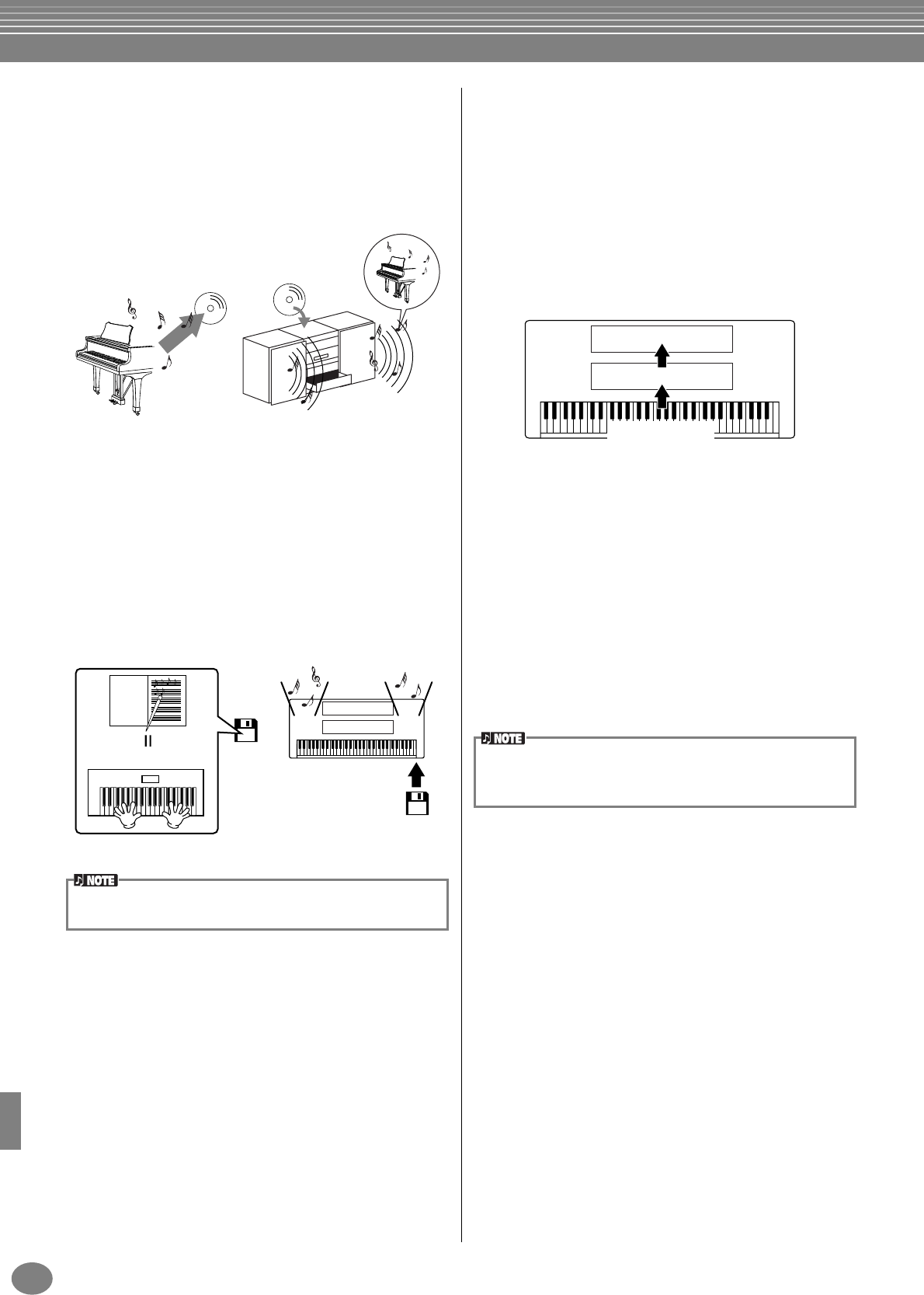
Using Your PSR-2000/1000 with Other Devices
PSR-2000/1000
156
Now let’s examine what happens when we play back a
recording. When you playback a music CD (for example,
a solo piano recording), you’re hearing the actual sound
(vibrations in air) of the acoustic instrument. This is called
audio data, to distinguish it from MIDI data.
In the above example, the actual acoustic sounds of the
pianist’s performance are captured in the recording as
audio data, and this is recorded to CD. When you play
back that CD on your audio system, you can hear the
actual piano performance. The piano itself is not
necessary, since the recording contains the actual sounds
of the piano, and your speakers reproduce them.
The “controller” and “tone generator” in the illustration
above are equivalent to the piano in our acoustic
example. Here, the player’s performance on the keyboard
is captured as MIDI song data (see illustration below). In
order to record the audio performance on an acoustic
piano, special recording equipment is needed. However,
since the PSR-2000/1000 features a built-in sequencer
that lets you record performance data, this recording
equipment is unnecessary. Instead, your digital instrument
— the PSR-2000/1000 — allows you to both record and
play back the data.
However, we also need a sound source to produce the
audio, which eventually comes from your speakers. The
tone generator of the PSR-2000/1000 fills this function.
The recorded performance is reproduced by the
sequencer, playing back the song data, using a tone
generator capable of accurately producing various
instrument sounds — including that of a piano. Looked at
in another way, the relation of the sequencer and the tone
generator is similar to that of the pianist and the piano —
one plays the other. Since digital instruments handle
playback data and the actual sounds independently, we
can hear our piano performance played by another
instrument, such as guitar or violin.
Finally, we’ll take a look at the actual data that gets
recorded and that serves as the basis for playing the
sounds. For example, let’s say you play a “C” quarter note
using the grand piano sound on the PSR-2000/1000
keyboard. Unlike an acoustic instrument that puts out a
resonated note, the electronic instrument puts out
information from the keyboard such as “with what voice,”
“with which key,” “about how strong,” “when was it
pressed” and “when was it released.” Then each piece of
information is changed into a number value and sent to
the tone generator. Using these numbers as a basis, the
tone generator plays the stored sampled note.
Recording and playing back the performance of an acoustic
instrument (audio data)
Recording Playback
FD
Tone generator
Sequencer
FD
Recording and playing back the performance of a digital
instrument (MIDI data)
Controller (keyboard, etc.)
Recording Playback
In the case of digital instruments, the audio signals are sent
through output jacks (such as AUX OUT) on the instrument.
Tone generator
Sequencer
Keyboard performance
(MIDI data)
Even though it is a single musical instrument, the PSR-2000/1000
can be thought of as containing several electronic components: a
controller, a tone generator, and a sequencer.


















